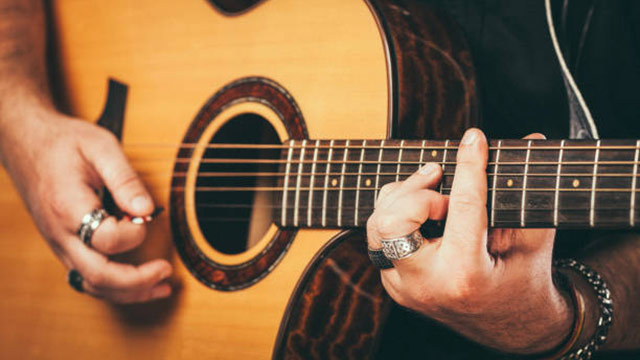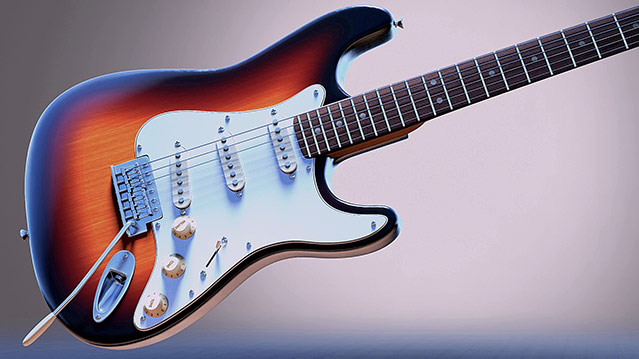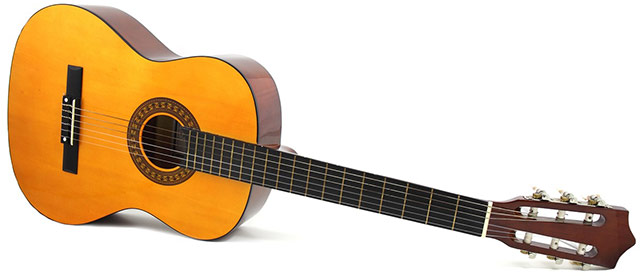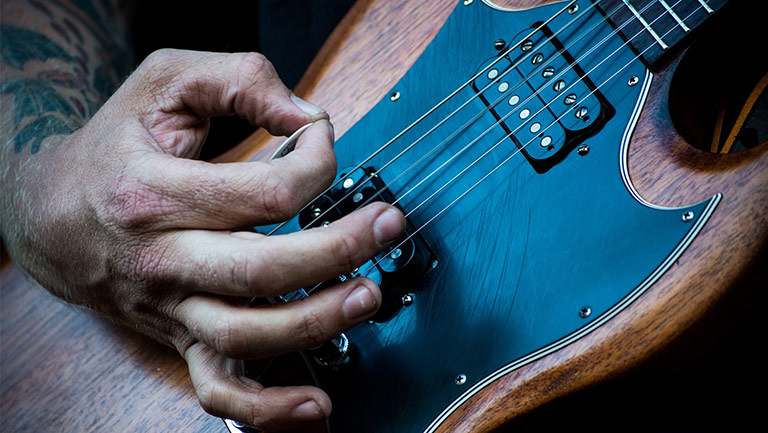For a beginner, whether or not to choose an electric guitar to start learning can be a hard decision. Are electric guitars easier to learn than acoustic guitars? Will someone starting with electric guitars be able to transition to an acoustic guitar if that’s what they ultimately want to play?
Many such questions come to your mind when researching and looking for answers. This article will discuss how electric guitars could be a good choice for a beginner to start learning guitar.
Electric guitars are relatively easier to play because they tend to have thinner strings, making them easier on the fingers. The strings are also much closer to the fretboard in terms of height. This makes pushing the strings down or fretting much easier, and some chords, like the barre chords, are much easier to play. However, electric guitars are not “easy,” only comparatively easier for a beginner for the first few weeks or months. Not even the best electric guitar can sit you down for practice. Therefore dedication and self-discipline are irreplaceable.
Why Electric Guitars Are Easier To Play?
Strings Are Thinner
Ask anyone who has played the acoustic guitar about their first few days, and they’ll tell you about the finger discomfort and calluses. While both of these are a part of learning guitar, they are more pronounced in acoustic guitars because of their thicker strings and higher action (or string height above the fretboard), especially in cheaper acoustic guitars.
Strings in an electric guitar are relatively thinner and are under much less tension. The tension in a string directly affects how tough it would be to press it down or fret. The higher the tension, the more finger strength you need and the more discomfort it’d cause.
For most people who have only played acoustic guitars, fretting and playing electric for the first time would be quite a pleasant experience.
Action Is Lower
The string action, which is the height of the strings above the fretboard, is one of the most dreaded aspects of an acoustic guitar for a beginner. It can make learning and practicing quite a pain, particularly for beginners. And one of the main reasons this affects beginners is that they usually go for inexpensive or even downright cheap guitars. And these “affordable” guitars are infamous for their painfully high string action, sometimes to such a degree that even a professional will have a hard time doing certain chords.
The action can be reduced to an extent by adjusting the truss rod. However, certain guitars may require the bridge saddle, nut, or both to be filed down.
On the other hand, most electric guitars have a relatively lower action and can be lowered more by adjusting the saddles (most electric guitars have an adjustable bridge).
Though there is much variance here as well, and cheaper ones may have suboptimal action, it should still be much easier to work with right out of the box than a cheap acoustic guitar in most cases.
Fretboard Is Narrower
Many electric guitars have a narrower neck and fretboard, which makes reaching for the thicker strings (the ones at the top) a bit easier initially as a beginner. For example, Fender guitars have a neck width of around 1.65 inches (some from Japan have lesser width of about 1.62 inches), while a typical acoustic guitar is 1.73 inches wide at the nut.
This is not a significant issue for many people since the difference is not much, and you can usually build finger flexibility and reach quite quickly. However, every little thing counts, and 2 or 3 such factors together can make learning very for a beginner in the initial stages.
Barre Chords Are Easier To Play

Out of all the things beginners really like to avoid, barre chords are probably one of the top-3. A Barre chord is a guitar chord where the player uses one of their fingers (usually the index) to press down multiple (usually all six) strings on a single fret.
Since electric guitars have thinner strings that are under less tension and with a lower action, barre chords are much easier to play for a beginner.
Electric Guitars Can Be More Fun
For beginners, it is advisable to keep the effects to a minimum early on so you can hear the notes you’re playing clearly. For example, it can help with intonation issues so that you get the right feel of how much pressure to apply.
One of the defining aspects of electric guitars is their ability to add effects through the amp or effect pedals. This is one of the major reasons why they’re so popular and versatile.
To spice up your learning and practice session, you can try out different effects like overdrive, reverb, etc., which are available on many beginner guitar amps (even headphone amps).
Can You Play an Electric Guitar Like an Acoustic?
Indeed, it is possible to play the electric guitar like an acoustic as far as tonal quality is concerned. Please see our detailed guide for more information on how to play acoustic songs on an electric guitar.
Besides that, you can play your electric guitar much the same way as the acoustic except for the percussive slaps since electric guitars have a solid body and won’t produce much sound.
Remember, it will not sound entirely like an acoustic guitar unless you plan to invest extra in gear like an acoustic simulator pedal. These effect pedals can shape the tone in a way an electric guitar sound much more like an acoustic guitar. Many people with electric guitars use them for songs that feature an acoustic guitar.
Things To Avoid in Your First Electric Guitar

A wrong choice for your first guitar may make practice a lot less fun in the best case and can make you give up on guitars in the worst. My intention is not to scare but to warn. Even if you bought the worst guitar in the world, you could buy another.
The general advice that applies to almost anything, particularly musical instruments, is never to buy the cheapest or the most expensive stuff. You want to stay somewhere in between.
The other thing to avoid in your first electric guitar is floating/tremolo bridges. Lower-quality floating bridges found on cheaper guitars may cause tuning stability issues, which is just a pain.
Also, try to avoid beginner-bundle guitars that come with a lot of stuff like the amp, straps, and whatnot. Buy a brand-name guitar and other gear separately.
Are Electric Guitars Easier Than Classical Guitars?

Classical guitars are recommended for learning by many teachers, even if you’re not interested in Classical music. The transition to an electric or acoustic guitar is more manageable. Classical guitars are typically smaller and come in much smaller sizes for kids. The strings are made of nylon or metal-wound nylon strings (for the three lower strings) instead of metal. These strings are under much less tension and are easier to fret than on acoustic guitars.
However, as far as electric guitars are concerned, I don’t see Classical guitars being any easier. It is much easier to find an inexpensive electric guitar that is playable than a classical guitar. And remember, classical guitars are known to be expensive instruments.
Therefore, unless you want to learn classical guitar for learning classical guitar or classical music, there is no point in going for them instead of an electric guitar.
The Most Important Thing To Remember
Dedication and self-discipline – which would mean you sit down for practice every day – will ultimately decide how far you’ll go. If learning the electric guitar was easy, fewer people would have one lying around collecting dust or being used as a showpiece. If you go into buying an electric guitar thinking it is this magically easy instrument, then you’ll be in for an unpleasant surprise.
Dedicate some time each day for practice and do it religiously. The finger movements, particularly in the fretting hand, will feel uncomfortable and unnatural initially, and you’ll have to deal with this reality patiently. It will take time and sheer repetition until you start building muscle memory in your fingers.
Most importantly, try to have your first electric guitar set up properly by a professional, even if you have to pay extra. It will make your life a lot easier and practice sessions more efficient.
Other Related Questions
Are Cheap Electric Guitars Harder To Play?
Most people agree that finding an inexpensive or budget electric with decent construction, sound, and playability is easier than getting a similar acoustic guitar, which is why some people choose an electric guitar as a beginner.
You cannot expect a good sound output from cheaper guitars, but they are still easier on your fingers for practice.
I would, however, suggest getting a brand name mid-range electric guitar rather than the cheap stuff, especially bundle guitars that come with practice amps, etc. Please stay away from them. Instead, get a separate headphone amp if you're short on finances.
Do You Need to Use Picks to Play Electric Guitars?
You can use a pick or your finger, whatever feels comfortable to you. However, most people would agree that the sound output and tone are slightly different when using your fingers. Using a pick is also a common way to play an electric guitar.
Are Electric Guitars Easier on Fingers?
Indeed, electric guitars have thinner and less tense strings, which are also closer to the fretboard in terms of their height. This makes them far easier not only to push down but also much easier on your fingers. An acoustic with suboptimal action can make your fingers very sore after continuous practice.


